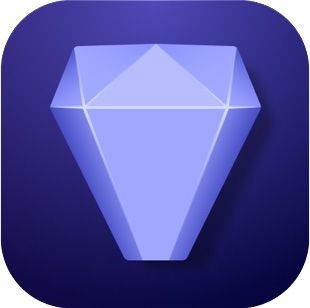 [ Read my product review disclosure statement here. ]
[ Read my product review disclosure statement here. ]
Topaz Photo AI works magic with still images. The more I use it, the more impressed I am with it. The folks at Topaz Labs graciously sent me a short-term license so I could review the full app for you.
CAUTION: This app needs to be purchased from the Topaz Labs website. There’s an app in the Mac App Store called “Photo AI.” This is not the same thing and should be avoided.
EXECUTIVE SUMMARY
Topaz Photo AI, from Topaz Labs, improves still images. It is fast, easy to use and creates excellent results. This stand-alone software tool:
The Autopilot (default) settings are excellent. Even better, key settings such as noise removal and sharpening have sliders which can be tweaked to improve results on a picture by picture basis.
On M-series Macs the software is fast and fluid. It rarely takes more than three seconds to generate a preview. It never changes the source image, always creating new images with the enhancements applied.
NOTE: Based on recent testing, it takes less than 20 seconds to render and save a queue of four images on M-series Macs. Rendering and saving the same queue on Intel Macs takes less than a minute.
It isn’t perfect; for example, it has problems with some details, like fingers. But it does a remarkable job restoring textural details, like the lace in a woman’s dress or the texture in a man’s suit, which I illustrate below.
The free trial is a fully-enabled version of the software with all tools working, but doesn’t save. I found this demo to be essential in learning and evaluating the software.
I manage a library of tens of thousands of still images dating back to the mid-1800’s. When you want a still image to look better – and want control over what “better” means – Topaz Labs Topaz Photo AI is a great tool to add to your toolkit. It isn’t cheap, but the results are worth it.
Developer: Topaz Labs
Product: Topaz Photo AI
Website: www.topazlabs.com
Price: $199 (US)
Free trial available with full features, but not able to save enhanced images.
WORKING WITH THE SOFTWARE
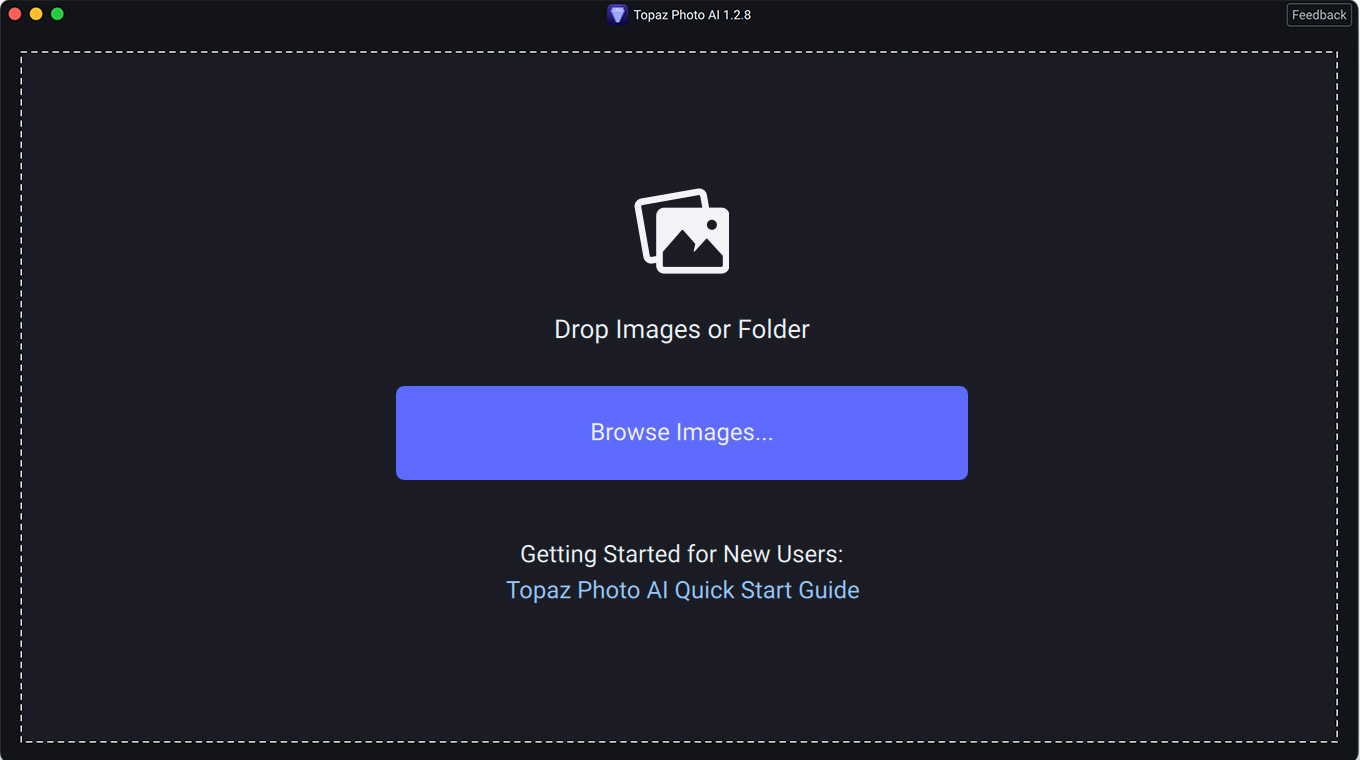
This window appears when you start the app. Drag image(s) you want to process into it. It supports a variety of image formats.
The first image appears enhanced with the Autopilot (default) settings applied. You can change default settings in preferences, but I tend to leave them alone and make individual adjustments to each image. (Ah, yeah. This is me… a “few years ago.” Back when ties existed.)
The source image is on the left, the enhanced image on the right. You can display images individually, or with a wipe between them, or side by side. Click the icons in the lower right corner below the images to adjust display options.
The blue thermometer in the lower left corner tracks various enhancements as they are applied to the preview. To save time, only that portion of the image visible in the right-hand window is enhanced for preview. If you change the view, the preview recalculates. The entire image is enhanced when you save.
NOTE: When you look at the larger image, see how the software nicely enhanced the weave in my suit.

Remaining images in the batch (called a “queue”) appear in the image tray at the bottom. Each image can have its own distinct settings.
To navigate:
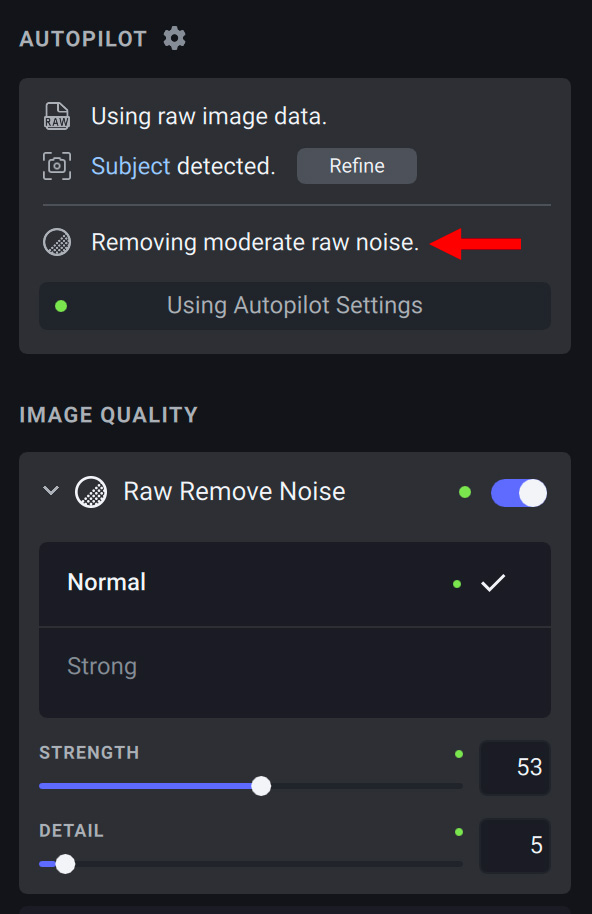
While all of my work is with older TIFF images (both photographs and scans), Topaz Photo AI can also remove noise and process raw images, as well as a variety of other image formats. The screen shot above illustrates removing sensor noise from low-light shots in raw images.
ENHANCE FACES
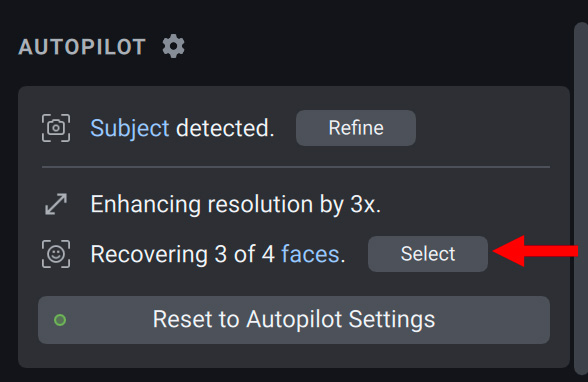
If multiple people are in the frame, click the Select button next to Recovering # faces (red arrow) and select which faces you want to enhance.
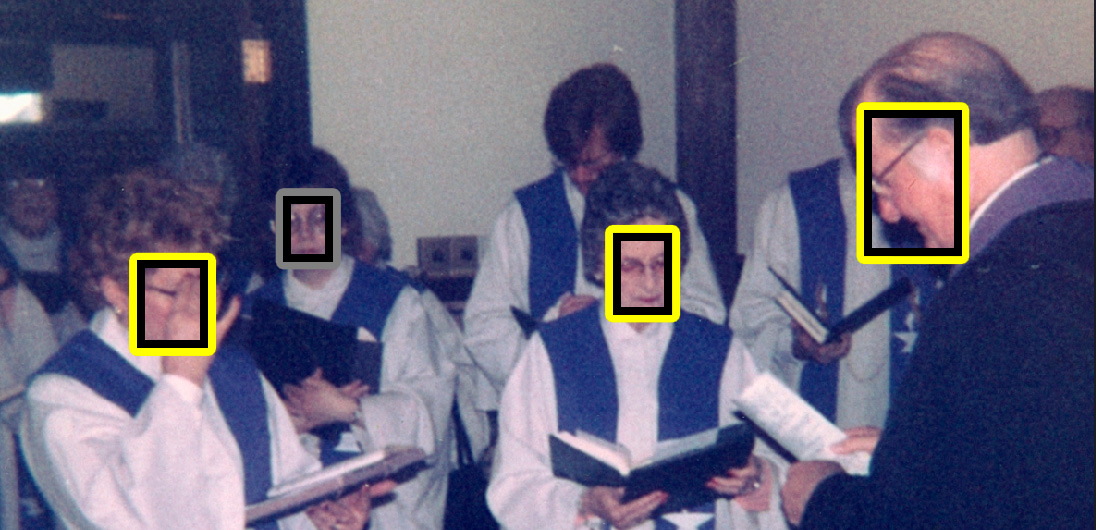
A yellow box indicates a face to be enhanced. Click a box to toggle between enhance or ignore. Then, click the blue Done box at the bottom (not shown) to accept your changes.
Compare the difference in this image when noise is removed. Simply stunning, and much more subtle than Photoshop can do on its own.
NOTE: To me, this noise removal sometimes creates textures which look too “plastic.” If so, decrease the noise removal strength and detail sliders until it looks better. Still, with this woman’s stole I can’t get the texture of fabric back into the image once noise reduction is applied. (Compare this stole with my suit in the earlier photo. Your success will vary with each picture.)
UPSCALING – THE REAL POWER
The real power in this software is its upscaling ability. In this image, a 1 megapixel image of a bird is scaled 6X to 42 megapixels! Look at the detail in the feathers and around the eye.
This entire image sparkles.
IMAGE CROPPING
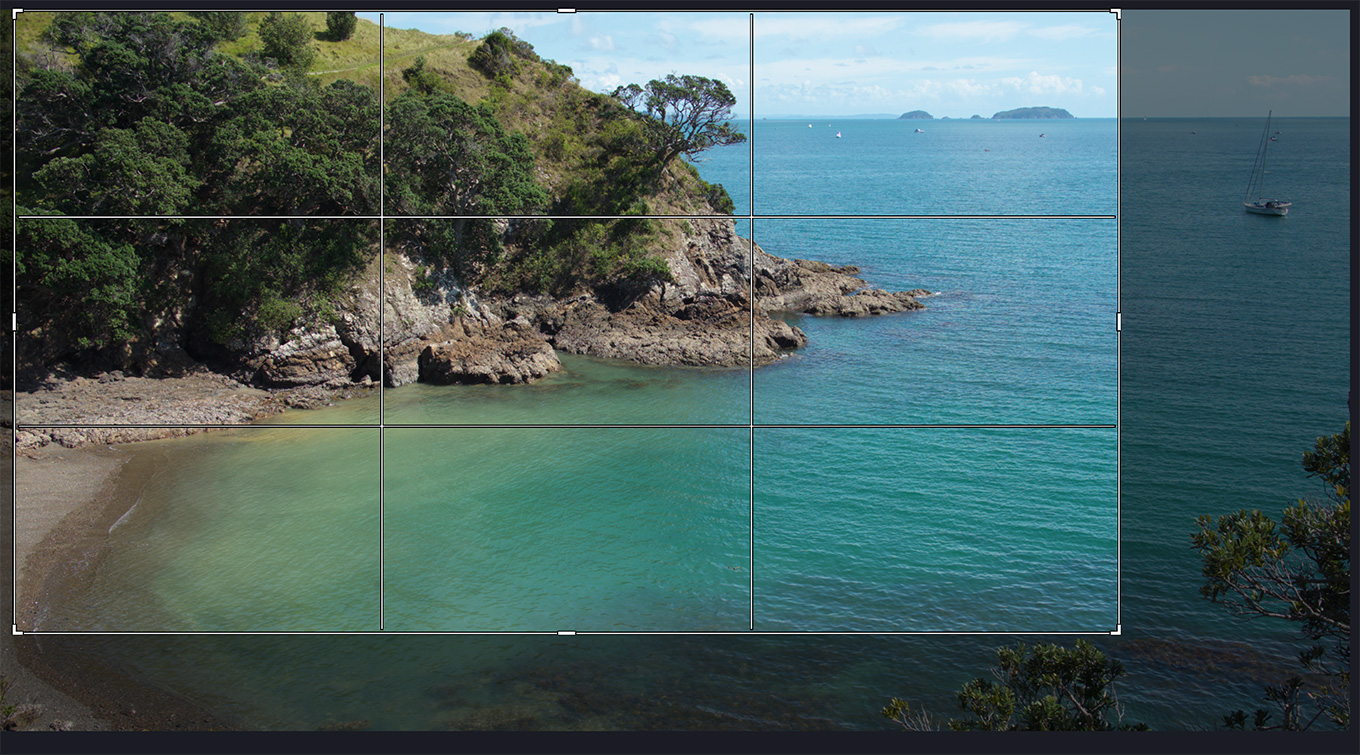
A beta feature, shipped with the current app, supports image cropping.
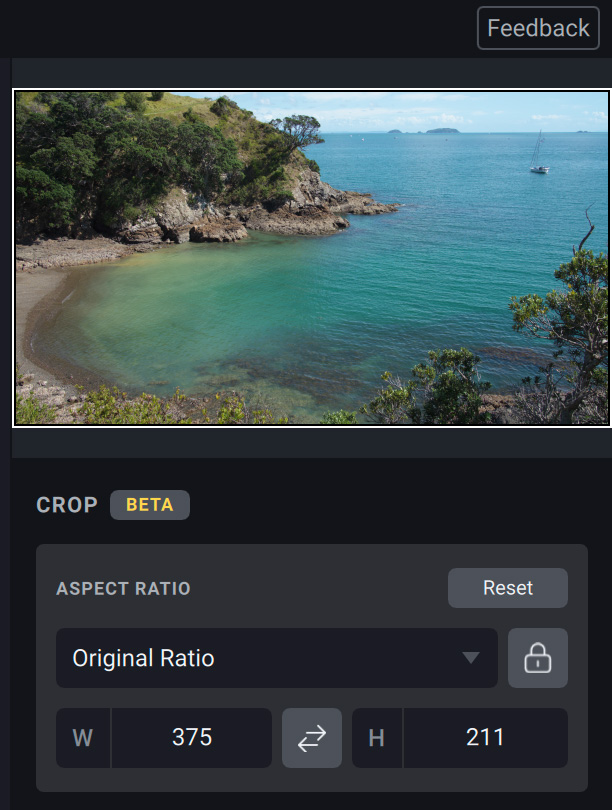
The crop area is drawn by the mouse and can be constrained to a specific aspect ratio or image size.
WHAT THIS WON’T DO
Here’s an example of what Topaz Photo AI can’t do: It won’t remove dust and scratches from an image. While it removes some noise – look at the background to the right of the woman’s face – it doesn’t repair damage to the image itself.
But…! Look at the image on the right in this screen shot. The source image is 300 x 400 pixels.) Look how Photo AI restored the detail in the lace of her dress, smoothed skin texture and restored individual strands of hair. The resulting image is 1200 x 1600 pixels and suitable for printing or display.
EXPORTING ENHANCED IMAGES

When you are ready, click Save # Images.
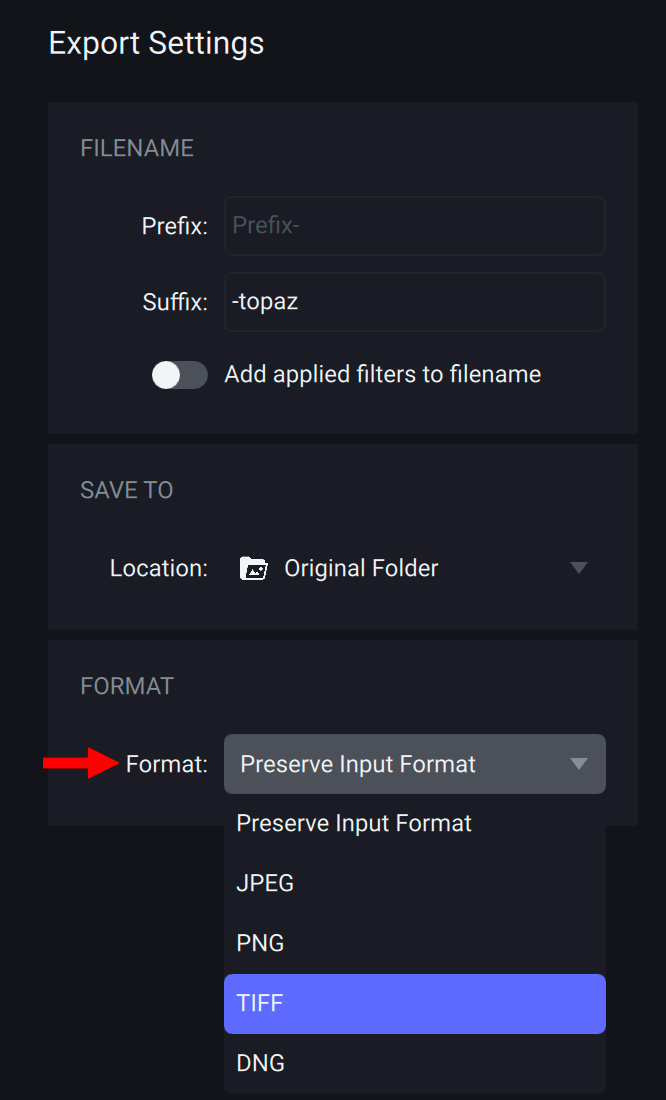
This opens the Export Settings window where you can define:
I prefer saving all images as TIFFs, which is uncompressed and preserves the maximum image data possible. PNGs are another good uncompressed option. JPEGs, of course, would create much smaller file sizes.
THINGS I’D LIKE TO SEE IMPROVED
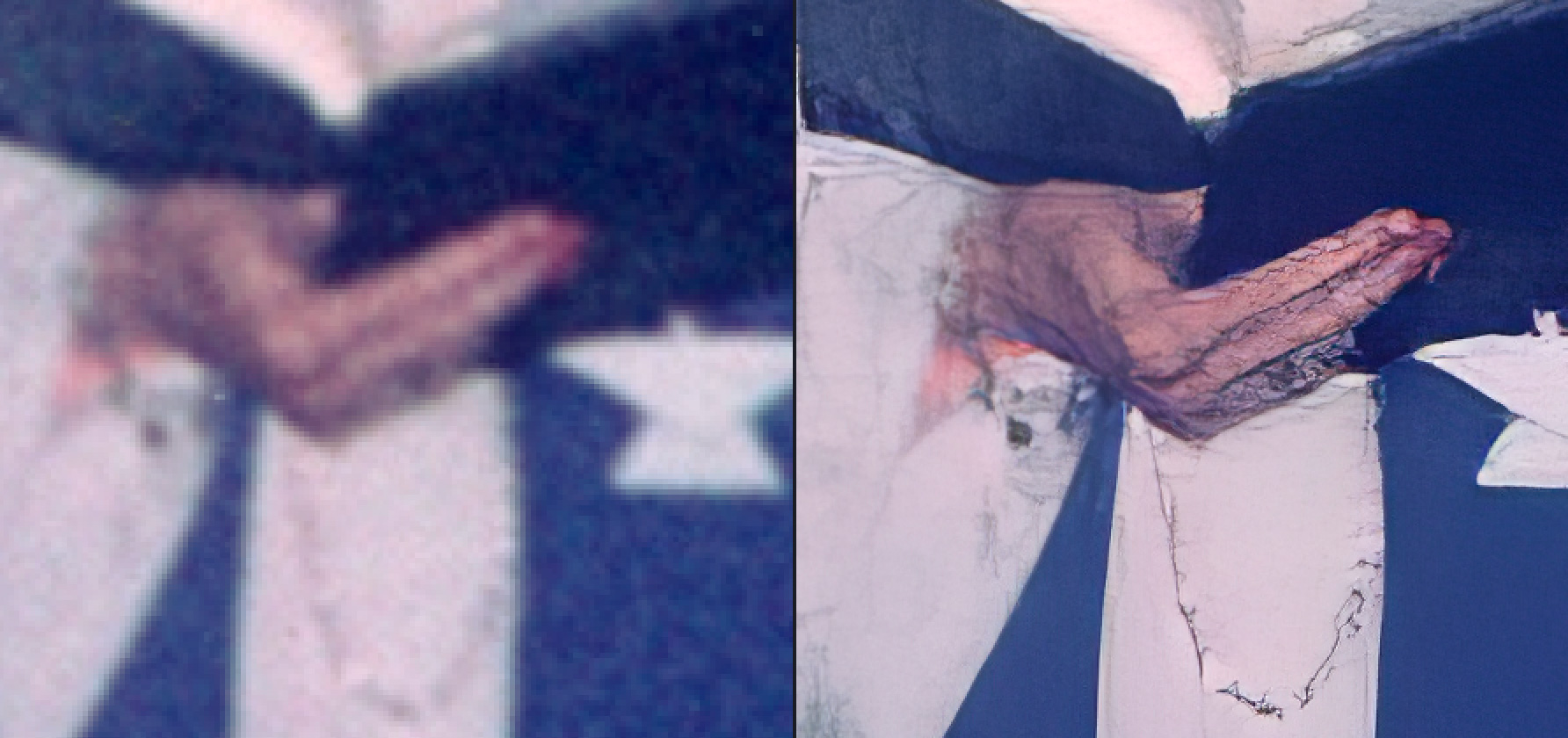
The source image (left) is enlarged so much it displays individual pixels. The right image shows hand artifacts and the loss of texture in the blue stole after enhancement. (Click to see larger image.)
Topaz Photo AI almost works magic. But there are a few things I’d like to see added:
SUMMARY
The more I work with this software, the more I like it. Yes, it can make some textures and skin look plastic. It isn’t perfect.
But most of the time, it enhances images to remove noise and reveal details you never knew were there. Since we can’t go back in time with better cameras, Topaz Photo AI is a perfect Plan B to recover the past and make it look as good as possible.
3 Responses to Review: Topaz Labs Topaz Photo AI – Excellent Image Enhancement
I tried Topaz Video Enhance AI first and was so impressed at the detail recovered – particularly from digitised old B&W film including faces. But it took all night to render a short film on my 2013 trash can Mac configured for video editing. I was hoping this would be vastly improved on the new M1 / M2 macs but from what you say Video Enhance has not yet been updated for silicone. Photo Enhance did not seem quite as good on some things although brilliant on others – but new versions keep coming out, although with some quirks, so it is worth reading detailed user reviews before you spend too much money on a new main version if your free update period has expired.
Chris:
Just a follow-up note. My original speed tests for Topaz Video AI were incorrect. I’m not sure why. However, after talking with their support team we discovered some settings may have been changed accidentally. In re-testing, I found that Video AI was 2.9x faster on the Mac mini than on a 2017 iMac. Compared to your 2013 Mac Pro, I would suspect the speed improvement to be closer to 6x faster.
I’ve updated my article to reflect this new information and wanted to follow up your original note with corrected specs.
Larry
I’d love to see a review of the Topaz Video AI app with an eye towards GPU usage (I’m still on Intel and am continually disappointed with how little applications utilize the expensive GPUs I added).